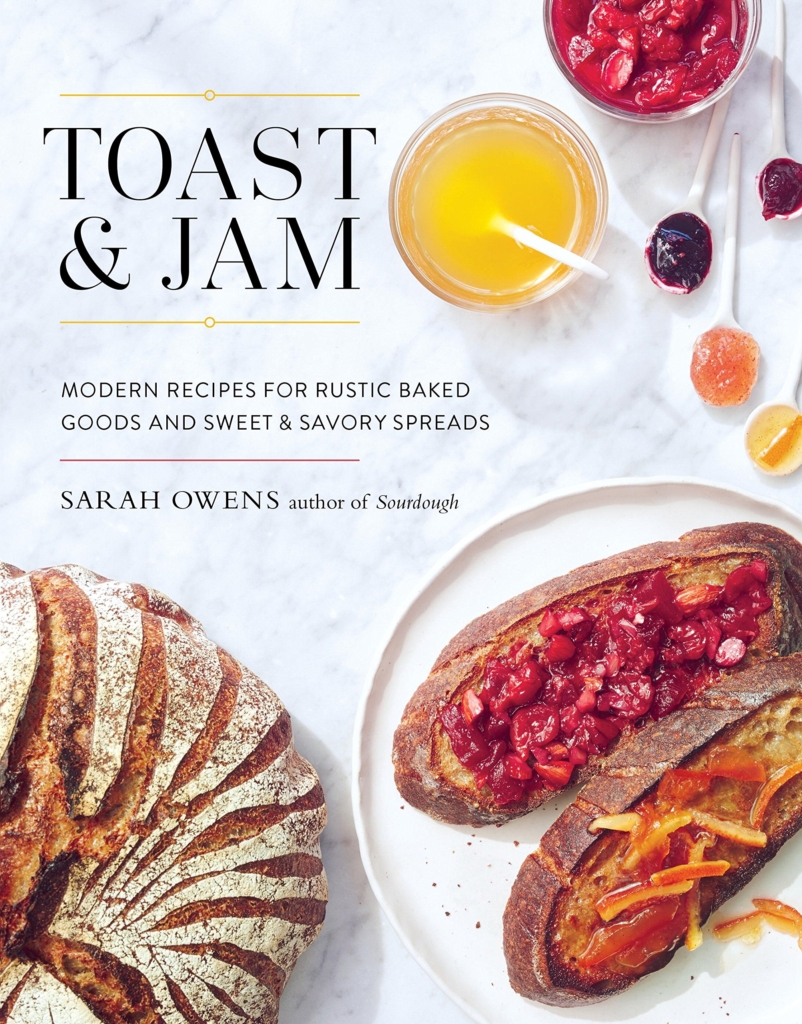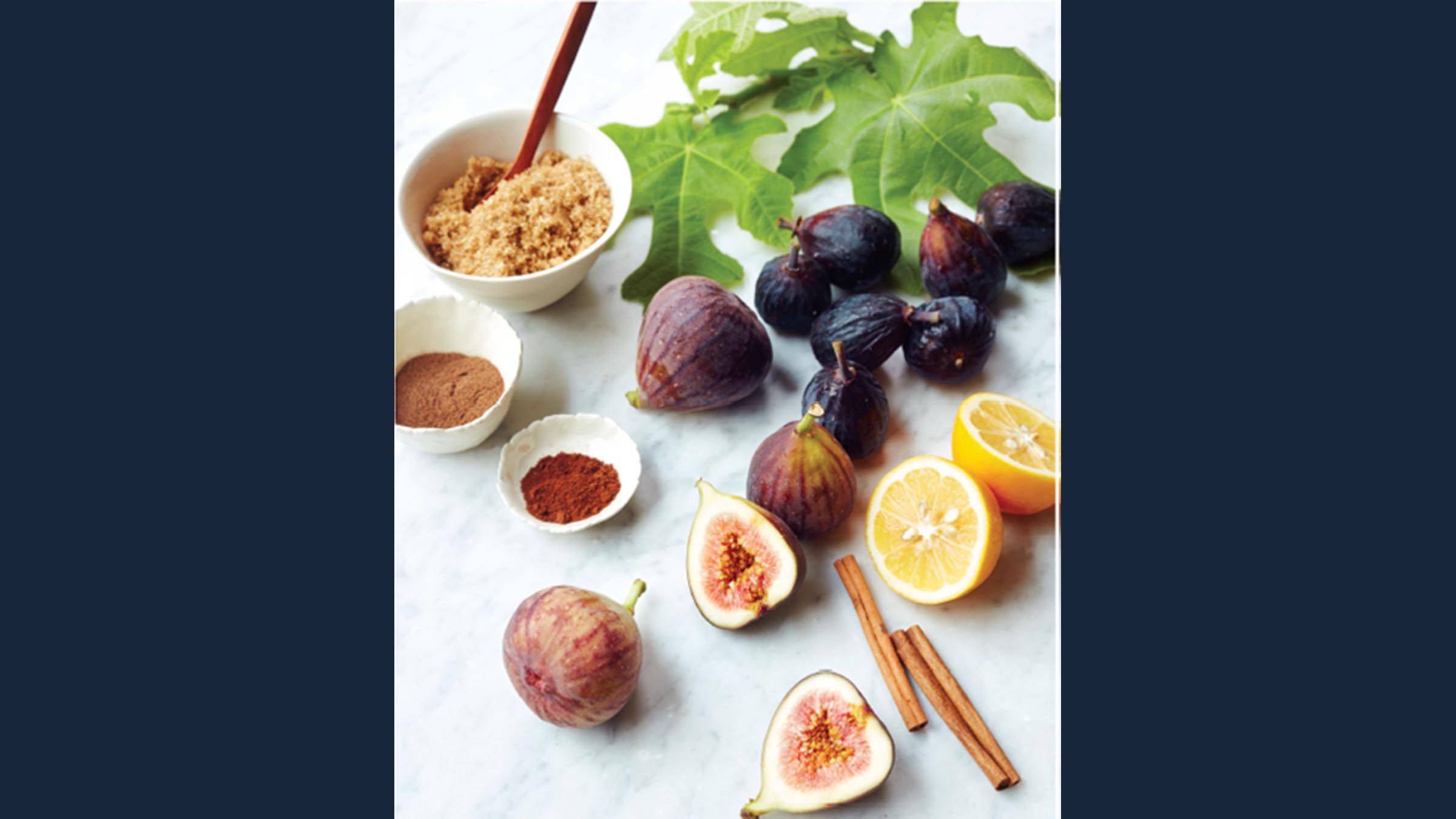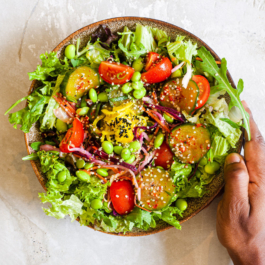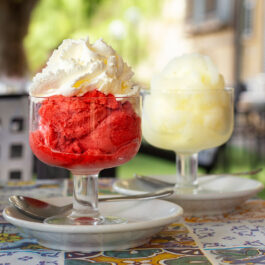“The recipe for these figs poached in syrup is based on that of an Ecuadorian family I have come to know, whose grandmother passed along some advice: Ecuadorians often soak their figs in water with baking soda before and after boiling them – a laborious process meant to eliminate the milky sap from the fruit before cooking them in syrup, ensuring that they are soft rather than tough and rubbery. I soak the figs once overnight in this recipe and find them to be of a pleasing texture. Sweet, dark-skinned cultivars such as Brown Turkey, Italian Black or Papa John are best suited for this recipe, but the sweeter green-skinned selections such as Green Ischia will yield pleasing results.” – Sarah Owens
Dulce de Higos
Makes 3 cups or 3 ½ pints
Ingredients:
500g/about 20 large fresh figs
900g/4 cups water
430g/1 small block panela or 430g/2 packed cups light brown sugar
2 cinnamon sticks
½ teaspoon ground allspice
¼ teaspoon ground cloves
20g/2 tablespoons freshly squeezed lemon juice
Method:
1. Using a paring knife, score the tops of the figs with a crosswise slit. Place them in a large bowl, cover with water, and leave to bleed the sap at room temperature overnight.
2. The next day, sterilise the jars according to the directions below.
3. Bring the water and panela to a boil over high heat, stirring until all the sugar is dissolved. Drain the figs and add them to the boiling water with the spices and salt. Continue boiling for 1 hour or until the syrup has reduced by about half.
4. Stir in the lemon juice and remove the pot from the heat. Ladle the dulce de higos into the drained, hot, sterilised jars. Position the lids and rings, and heat-process according to the directions below.
Try It With…
The whole figs and syrup are excellent when served alongside a wedge of salty cheese, such as queso fresco, and wedged between a soft Oat Flour Brioche or Pretzel Roll. Spoon over Baked Pain Perdu or serve with Ricotta and a Dry Toast or Skillet Toast of your choosing. (Recipes available in my book, Toast & Jam)
Sterilising Jars
Place the required amount of clean jars on a rack in a large stock pot or boiling water canner. I often include at least one extra jar, as fruits and vegetables vary in volume and weight depending on the season, sometimes blessing you with a little extra. If you have a fancy jar that isn’t appropriate for long-term storage but is heatproof and beautiful for presentation, consider sterilising it as well for immediate enjoyment or refrigeration/freezer storage.
Cover the jars with water, position the lid, and bring the water to a simmer over medium heat, being careful not to let it boil. For ease of handling, place the lids (but not the screw rings) in a small saucepan, cover them with water, and heat until just under boiling. Sterilise the jars and lids for 10 minutes before turning off the heat. Leave the hot water–filled pot on the stove eye for later use in heat-processing the filled jars.
Heat-Processing For Long-Term Storage
When your jam, jelly or pickle is ready to process, remove one jar at a time from the hot water bath, draining any residual water back into the pot. Place the jars on a clean sheet pan for ease of cleanup. Do not dry the jars with a towel; the extra water will evaporate from the heat. Ladle or pour the hot preserve or pickle into the hot jar, leaving about one-quarter inch of space from the top, and slide a clean spatula or knife down the inside of the jar to release any trapped air. Top off the contents if necessary, and repeat until the jars are filled. Carefully wipe the rims with a clean, damp towel and position the hot lids before firmly screwing on the rings.
Place the filled jars back into the hot water bath, making sure they are covered by at least one inch of water, then position the lid on the pot and bring the water to a full boil over high heat. Process for 10 minutes, starting a timer when the water reaches a full boil.
When the timer rings, turn off the heat, remove the lid from the pot, and allow the steam to clear for about 5 minutes. Remove the jars from the water bath without tilting them, and place them upright on a towel to let them cool undisturbed.
After about 24 hours, check the lids for a seal by pressing down on the centre of each one – they should show no movement. Lids that pop with movement when pressed have not sealed properly and must be refrigerated immediately. Label the sealed jars and store them in a cool, dry location, ideally between 50°F (10°C) and 70°F (21°C).

Recipe reprinted from: Toast and Jam: Modern Recipes for Rustic Baked Goods and Sweet and Savory Spreads. Toast and Jam is all about rustic breads, scones and biscuits paired with fruit-jams, jellies, nut butters, savoury spreads, pickles, and more, written by the James Beard award-winning author of Sourdough, Sarah Owens. Roost Books; Illustrated edition (2017). Photography: Ngoc Minh Ngo.











Sorry, the comment form is closed at this time.